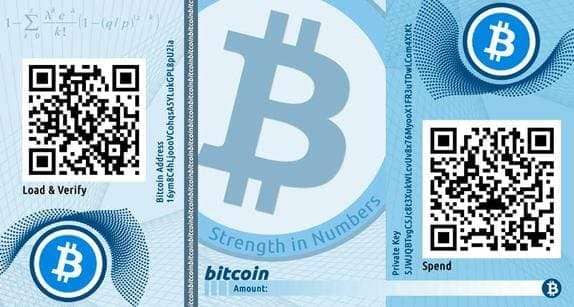The State of the Merge: An Update on Ethereums Merge to Proof of Stake in 2022
Content
- Great Companies Need Great People. That’s Where We Come In.
- Central Banks and the Future of Money
- Proof of Stake vs. Proof of Work: Risk of Attack
- Checking if the site connection is secure
- Ethereum Q3 2020 DeFi Report
- Ethereum Switches to Proof-of-stake After 7 Years of Work
- Proof Of Work Vs. Proof Of Stake: Explained
- Proof-Of-Stake: Will The Ethereum Merge Really Lead To A Rally?
Ethereum has distinguished itself as the first blockchain to enable decentralized applications For network validators—and the planet itself—however, the difference is night and day. Instead of creating new ETH tokens and validating transactions via the energy-intensive Proof-of-Work consensus mechanism, this process will now be done through the much more efficient Proof-of-Stake model. Proof of stake differs because it only allows miners to validate blocks if they have a security deposit or „stake.“ If attackers try dishonest processes, they lose their stake. There is no real benefit for cryptocurrency attackers to disrupt the blockchain because they can’t double-spend coins or steal coins without losing their investment.
While mining cryptocurrency tokens is rewarded and incentivized, the proof of stake system also disincentivizes bad behavior by way of slashing stake, ejection from the network, and other penalties. There are different ways transactions on the blockchain — the software that underpins most crypto — can be verified. In the “proof-of-work” system currently used by Ethereum, new transactions are checked by crypto miners. Major crypto exchanges, including Coinbase Global(COIN.O)and Binance, have said they will pause ether deposits and withdrawals during the merge.
Great Companies Need Great People. That’s Where We Come In.
Ether is the currency of the platform and is the second most popular crypto coin after bitcoin. Unlike Bitcoin, which is primarily a cryptocurrency that uses blockchain technology, Ethereum is a blockchain platform on which anybody can run decentralized apps to offer a broad range of services. This is made possible without energy-intensive equipment required for Proof-of-Work mining. Staking intrinsically provides an incentive for users to hold and not to sell. If you’re staking, you’re putting a portion of your portfolio towards the network’s consensus algorithm.
Legitimate and accurate validations are rewarded with new ether blocks. This means that you need more than a decent graphics processing unit to be a validator on the network now. On the other hand, the PoS model does not require miners to decode the 64-digit hexadecimal key to add a new block to the chain. Instead, the procedure involves users locking their funds on the blockchain to participate in mining.
Central Banks and the Future of Money
In what will be known as the Shanghai upgrade, users will be able to withdraw staked ETH, with a daily withdrawal limit of 40,000 ETH per day (out of ~13 million staked). Prior to the Merge, mining revenue fell hard from its $2.5 billion peak in May 2021, though Ethereum miners still took home close to half a billion dollars in June of this year. While the initial Merge won’t do much to lower gas fees, sharding will help in this regard. The three principal upgrades are the Proof-of-Stake Beacon Chain, the Merge itself, and the scalability-enablement called sharding. After years of hard work by developers, much speculation by the ETH community, and great interest worldwide, the biggest milestone in crypto history was reached on September 15th. Sushi governance will vote on a tokenomics redesign and already passed a proposal that substantially impacts the token’s mechanism for value accrual.
We just discussed how Ethereum 2.0 is divided into 64 different chains and how validators are selected to add a new data block to them. But there has to be something that connects each of these chains and decides who will be selected as a validator, right? This question brings us to the last major difference between ETH and ETH 2. However, the older Ethereum blockchain could handle only 15 transactions per second. It caused the users to pay high transaction fees and deal with delayed transfers. Thanks to smart contracts, programmers worldwide can use the blockchain to develop a wide variety of decentralized applications .

These are generally hard to solve, so they require a lot of work, or electricity, to complete. Proof of stake is a consensus protocol for verifying cryptocurrency that doesn’t require energy-intensive cryptographic problems. Instead, those who stake the most coins to the network get rewarded with more cryptocurrency. Along with the way miners‘ transactions are validated, there are two other significant differences between the two methods — energy consumption and risk of attack. The main issue with proof of stake is the extensive investment upfront to buy a network stake. Those with the most money can have the most control because of the algorithm weight to choose the validator.
Proof of Stake vs. Proof of Work: Risk of Attack
Each slot in an epoch represents a set time for a committee of validators to propose and attest to the validity of new blocks. Proof of work has been a part of the crypto market ethereum speedier proofofstake from its earliest days, having been built into the bitcoin blockchain when it launched in 2009. Blockchains don’t have a central gatekeeper, like a bank, to verify transactions.
- There are several actions that could trigger this block including submitting a certain word or phrase, a SQL command or malformed data.
- This is a lucrative task that attracts a lot of interest and miners need to demonstrate work to earn the rewards.
- Moving towards a PoS system, at least in theory, will minimize the risk of cyberattacks.
- After the blockchains merge, Ethereum will introduce sharding, a method of breaking down the single Ethereum blockchain into 64 separate chains, which will all be coordinated by the Beacon Chain.
- The proof-of-stake concept is fairly technical, and we did our best to break it down in a previous post here.
Some community members were so upset they kept mining the original chain, resulting in two Ethereums—Ethereum Classic and what we have today. If it happens again, the success behind any competing version of Ethereum will depend on the value of its coin in the open markets. Anyone who owns Cardano can stake it and set up their own validator node. When Cardano needs to verify blocks of transactions, its Ouroboros protocol selects a validator.
Validators are selected randomly to confirm transactions and validate block information. This system randomizes who gets to collect fees rather than using a competitive rewards-based mechanism like proof-of-work. When the network performs optimally and honestly, there is only ever one new block at the head of the chain, and all validators attest to it. However, it is possible for validators to have different views of the head of the chain due to network latency or because a block proposer has equivocated. Therefore, consensus clients require an algorithm to decide which one to favor. The algorithm used in proof-of-stake Ethereum is called LMD-GHOST, and it works by identifying the fork that has the greatest weight of attestations in its history.
It relies on miners to act in good faith and follow consensus rules. Proof of work projects also struggle to scale their transactions leading to slowdowns in transaction times. That has led to suggestions for changes in block sizes and different transaction channels off the chain. But many believe these solutions would only be temporary and would lead to increased centralization, something that many in the crypto world would not like to see.
Checking if the site connection is secure
After a miner verifies a block, it is added to the chain, and the miner receives a fee in cryptocurrency. Proof of work is a consensus protocol for verifying cryptocurrency that relies on mining to validate transactions. Mining means that computers that are connected to the network race to solve complicated cryptographic puzzles, which is an energy-itensive process. Miners pledge an investment in digital currency before validating transactions with proof of stake. To validate blocks, miners need to put up stake with coins of their own. The choice for who validates each transaction is random using a weighted algorithm, which is weighted based on the amount of stake and the validation experience.
It eliminates the need for mining new blocks as the network is now secured using staked ETH and validators. Popular cryptocurrency blockchain Ethereum has completed its long-awaited switch to proof-of-stake. That upgrade process, better known as “The Merge”, has been years in the making. According to the Ethereum Foundation, today’s transition reduces Ethereum’s energy consumption by 99.95%.
Ethereum Q3 2020 DeFi Report
On December 1, 2020, Ethereum launched a separate proof-of-stake Beacon chain. On September 15, 2022, the original Ethereum Mainnet merged with the Beacon Chain to exist as one chain.
Ethereum Switches to Proof-of-stake After 7 Years of Work
If a new project needs to make its presence felt in the world of blockchain, becoming eco-friendly is the most important thing it has to do. The older PoW consensus model required Ethereum’s blockchain to depend on mining. Moreover, it can also deal with a risk that comes with a 51% attack threat. Being a decentralized platform, Ethereum’s developers have to make sure that no single party manages to take over the majority of the network. These updates aim to culminate the shift from the Proof of Work consensus model to the newer Proof of Stake consensus model. It will help Ethereum catch up with some of the newer blockchains, such as Cardano, Polkadot, Solana, etc., that are already using the PoS model.
Proof of stake is a method used by cryptocurrency networks to validate and confirm new transactions. But the fact that the Ethereum blockchain consumes a lot less electricity is incredible news already. Many developers will now focus on rollup contracts to reduce transaction costs and enable scalability. After the blockchains merge, Ethereum will introduce sharding, a method of breaking down the single Ethereum blockchain into 64 separate chains, which will all be coordinated by the Beacon Chain.
As finality on PoS requires at least two-thirds , an attacker could prevent finality by voting with at least one-third of the total ETH staked. If the chain doesn’t reach finality for more than four epochs, the inactivity leak will reduce staked ether from validators voting against the majority, and allow honest validators to finalize the chain. Validators stake capital in the form of ether into a smart contract on Ethereum in proof-of-stake. This staked ether is subsequently used as collateral, which can be used to kill the validator if he or she is dishonest or lazy. The validator is then in charge of ensuring that new blocks propagated over the network are correct, as well as periodically producing and propagating new blocks.
Proof-Of-Stake: Will The Ethereum Merge Really Lead To A Rally?
A consensus mechanism is a method for validating entries into a distributed database and keeping the database secure. In the case of cryptocurrency, the database is called a blockchain—so the consensus mechanism secures the blockchain. In order to participate in this, you stake 32 ether , which right now is about $48,000.
Its creator wanted to do away with the control that third parties, often big banks or states, exerted over financial systems. Although anyone staking crypto could be chosen as a validator, the odds are very low if you’re staking a comparatively small amount. If your coins make up 0.001% of the total amount that has been staked, then https://xcritical.com/ your likelihood of being chosen as a validator would be about 0.001%. Since each individual’s situation is unique, a qualified professional should always be consulted before making any financial decisions. Investopedia makes no representations or warranties as to the accuracy or timeliness of the information contained herein.
